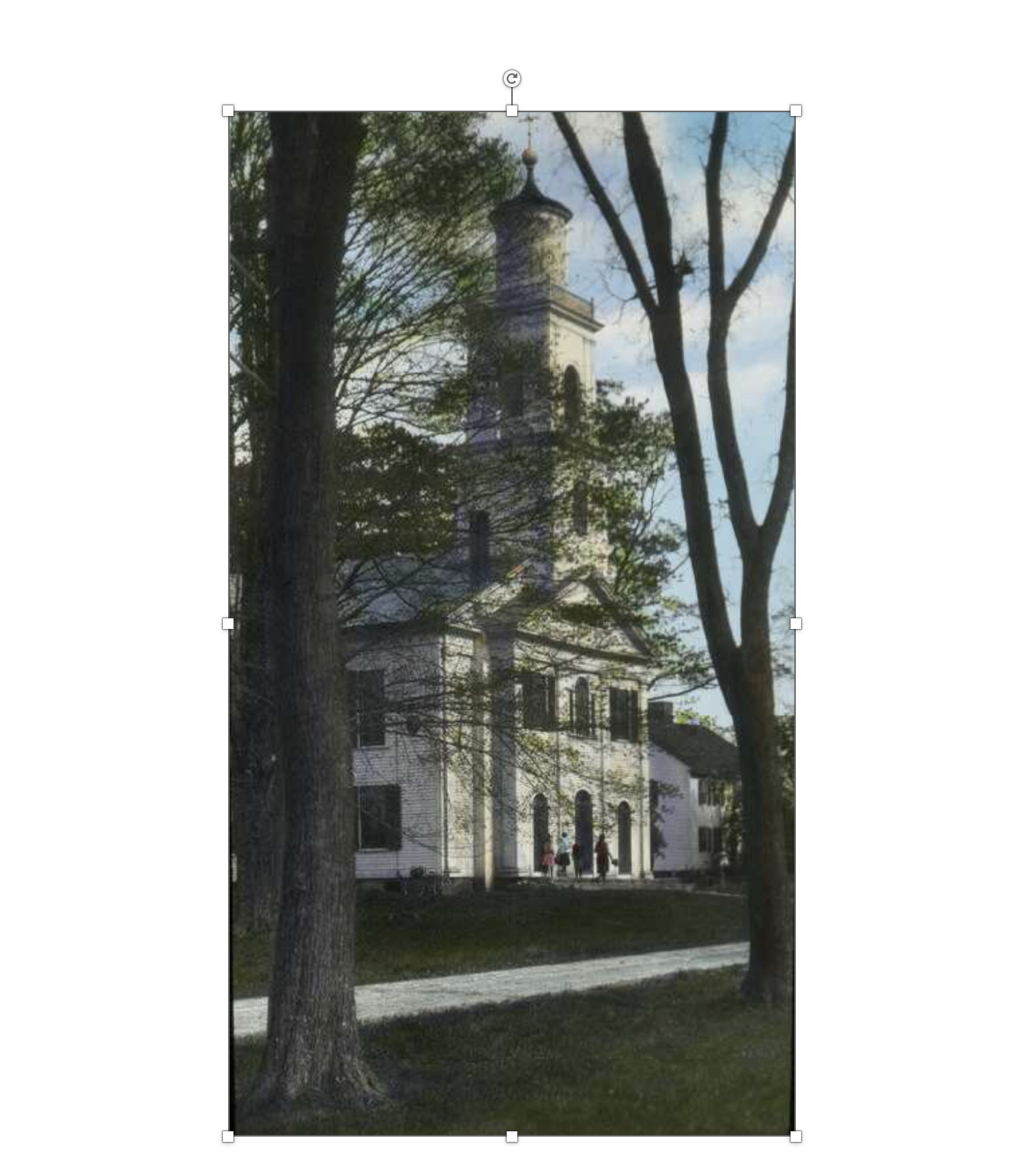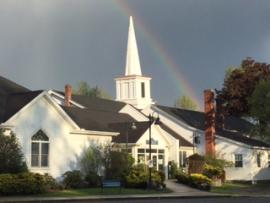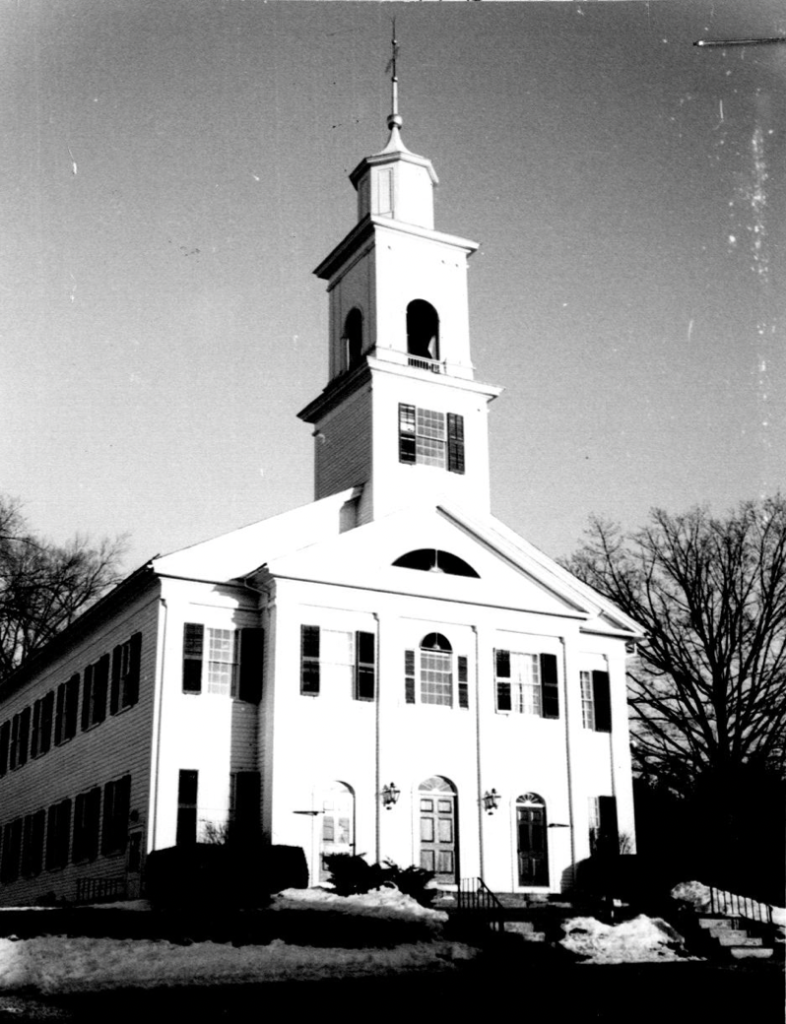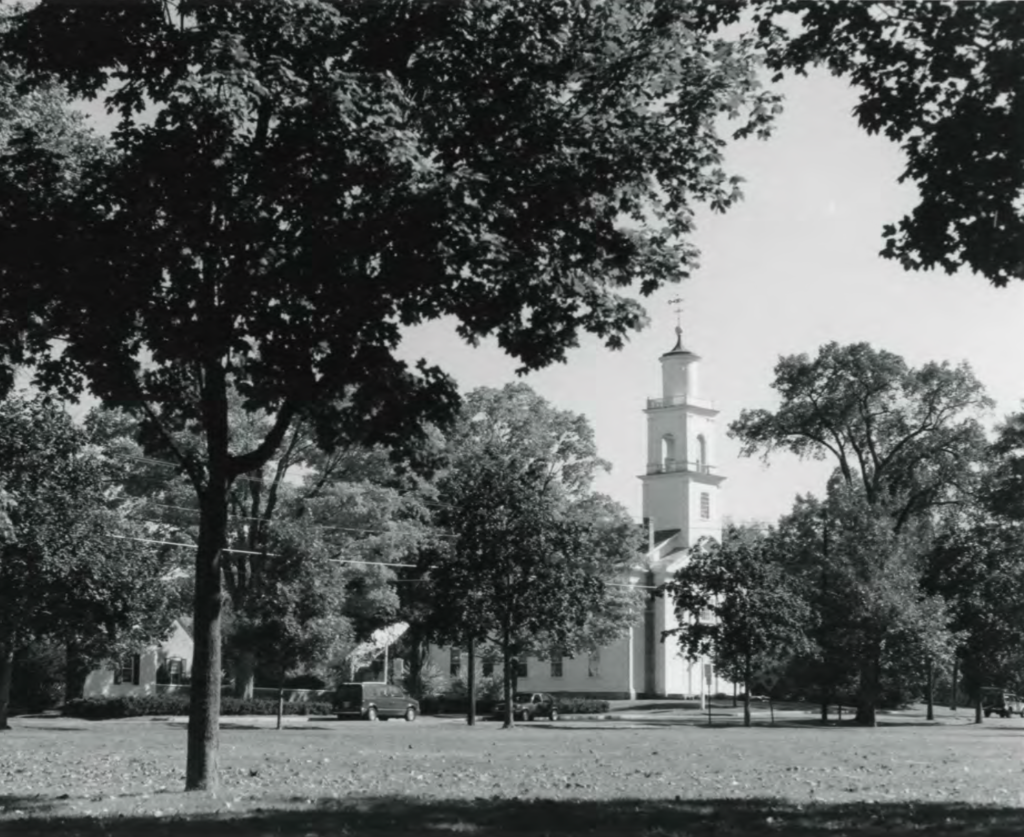Amherst History Month-By-Month: Amherst’s New England Heritage

Amherst's South Congregational Church (ca. 1920). Photo: Frank Albert Waugh (Digital Commonwealth)
When thinking of a typical New England town, an image can be conjured that includes a large, unadorned, Classical building that was the historic meetinghouse of the community. Around the winter holidays, such images especially persist. In the 1700s, in colonial America, these meetinghouses did not have a steeple, but over time, steeples were added, especially in the early 19th century, which is when many of the meetinghouses that were built still survive.
Amherst, with several historic village centers, has three surviving meetinghouses: Second Congregational Church, now the Jewish Community of Amherst; the North Amherst Congregational Church, now the Zion Church of the Nazarene; and South Amherst Congregational Church on Fiddler’s Green at the end of Shays Street.
I want to use this column to talk about preservation work proposed for two of them.
So, is it possible to justify the use of public funds for private religious buildings? I have already written about two of Amherst’s historic Black churches that have protections due to their historic and architecture significance. Long may it be so. In 2018-19, before the pandemic, the Jewish Community of Amherst (JCA) (which owns and operates the building that was the Second Congregational Church in East Amherst, and is now a synagogue) was able to secure funds in part to stabilize the steeple on their building with its iconic acorn finial.

I want to argue that the case can be made for exterior stabilization (and any necessary interior adjustments to support such structural work) as this can be a positive benefit for the town as a whole. Currently, there are two other churches in town that are deserving of Community Preservation Act Committee funds, like the JCA received in the past: the North Congregational and the South Congregational churches, which need stabilization and repair in order to avoid major irrevocable structural damage.
North Amherst’s Congregational Church (now the Korean Zion Church of the Nazarene) sits on a small knoll that dominates North Amherst center. The building was designed by Captain Winthrop Clapp of nearby Montague and financed by Oliver Dickinson. It included stakeholders in the community such as Jonathan Cowls and Reuben Roberts and a fascinating artist called Erastus Salisbury Field. In 1843, the congregation condemned slavery as “an enormous sin against God” and created an anti-slavery society. In the present day, the church shelters a small but thriving congregation that worships inside a very old structure with significant deferred maintenance. Conserving this building is a must for this town and this might involve offering financial support for a more technical evaluation of the physical condition of the steeple as well as advice from a structural engineer with historic preservation experience. For the immediate future, funds to assist in the stabilization of the spire and leaking roof are important first steps to avoid bringing down the ceilings inside.

The South Amherst Congregational is similar to the North Amherst church in stylistic terms. It was built by two local carpenters in 1824-25 and “eventually became a traditional two-story church almost certainly patterned from one of Asher Benjamin’s drawings in The American Builder’s Companion. With its double gables, pilasters, Palladian window and fanlights above each of three west facing doors, it remains a striking example of a New England Congregational Church of this period.” But recently, the church has silenced its bells that used to ring on the South Common (known as “Fiddler’s Green”) to try to avoid further damage to a badly listing steeple that threatens to collapse. The congregation has outlined recommendations by structural engineers and contractors who have submitted their proposals to the Amherst Historical Commission. It appears that several layers of repairs have only further weakened the structure and what is needed now is to deconstruct and rebuild the entire steeple.

These two buildings retain their original use as religious in nature. Despite very important and relevant arguments about separation of church and state, it does make sense to help preserve these two structures as helping not only to build community (the churches and the synagogue all have important secular missions as well as spiritual goals) but also because they both deeply characterize what Amherst looks like.
More Information
The Colonial Meeting House (Wikipedia)
